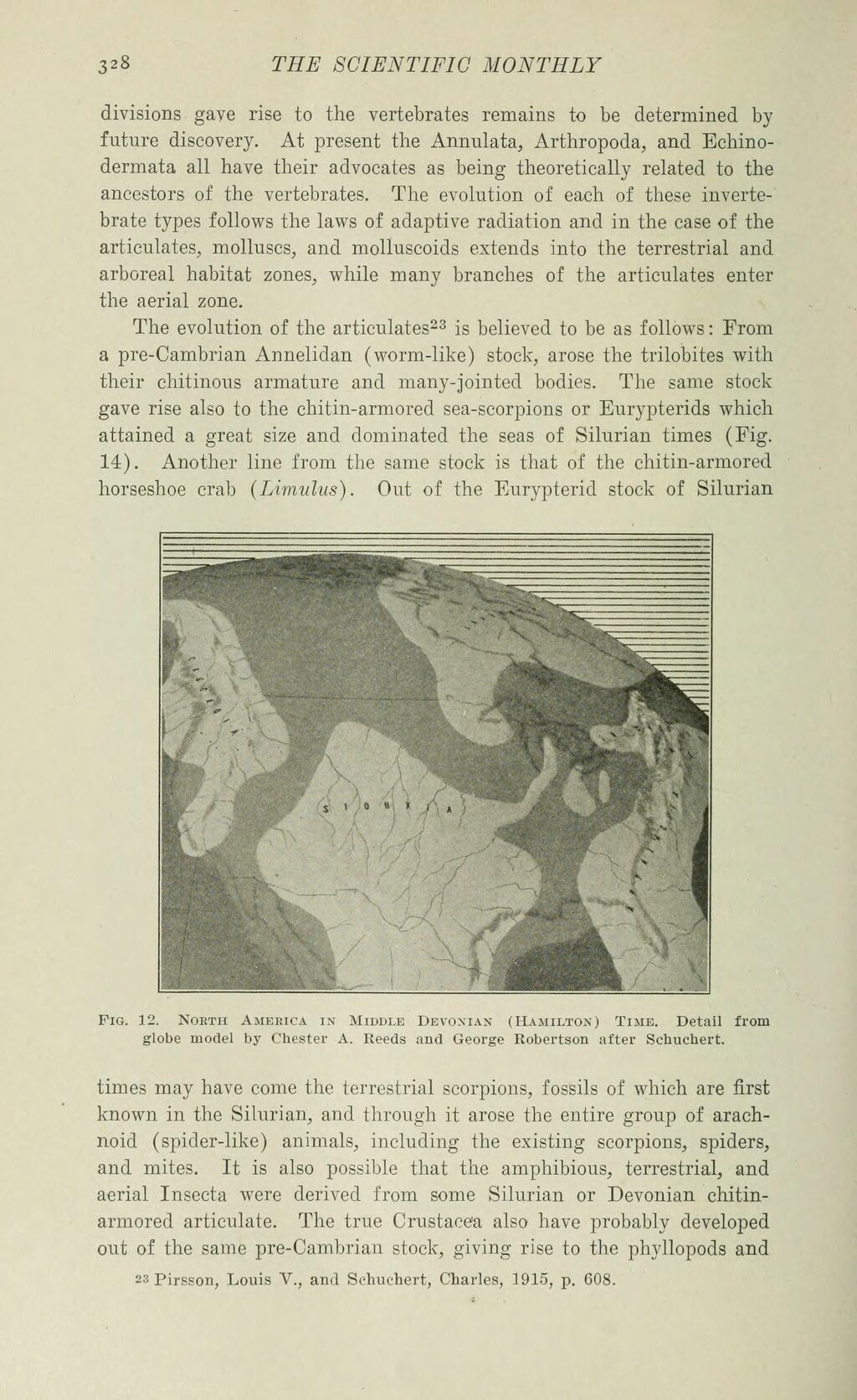3*8 THE SCIENTIFIC MONTHLY
diviBioDB gave rise to the vertebrates remains to be detenmned by future discovery. At present the Annulata, Arthropoda, and Echino- dermata all have their advocates as being theoretically related to the ancestors of the vertebrates. The evolution of each of these inverte- brate types follows the laws of adaptive radiation and in the case of the articulates, molluscs, and moUuscoids extends into the terrestrial and arboreal habitat zones, while many branches of the articulates enter the aerial zone.
The evolution of the articulates*' is believed to be as follows: From a pre-Cambrian Annelidan (worm-like) stock, arose the trilobites with their chitinous armature and many-jointed bodies. The same stock gave rise also to the chitin-arraored sea-scorpions or Eurypterida which attained a great size and dominated the seas of Silurian times (Fig. 14). Another line from the same stock is that of the chitin-armored horseshoe crab (Limulus). Out of the Eurypterid stock of Silurian
��times may have come the terrestrial scorpions, fossils of which are first known in the Silurian, and through it arose the entire group of arach- noid (spider-like) animals, including the existing scorpions, spiders, and mites. It is also possible that the amphibious, terrestrial, and aerial Insceta ivere derived from some Silurian or Devonian chitin- armored articulate. The true Crustacea also have probably developed out of the same pre-Cambrian stock, giving rise to the phyllopods and "3 Pirspon, Louis V., and Schucbert, Charles, 1015, p. 608.
�� �
